6 Types of Collateral Materials to Market Your Business
Eye-catching visuals engage customers, improve brand awareness, and boost sales. Collateral materials, such as packaging, print promotions, infographics, and retail displays, can help your business succeed.
Collateral materials are the media that you use to promote your company’s products or services.
They’re used to guide potential customers through the sales funnel. While some materials attract potential customers at the beginning of their research, others are used to convert those who have done their research into buyers.
Because first impressions are everything, how they look impacts how effective they are.
By partnering with a high-quality graphic design company, you can ensure that your collateral materials look great and appeal to your primary audience. Here are a few examples of the visuals they can create for your business.
Need help selecting a company?
Based on your budget, timeline, and specifications we can help you build a shortlist of companies that perfectly matches your project needs. Get started by submitting your project details.
Examples of Collateral Materials for Marketing
- Packaging
- Print Promotions
- Retail Displays
- Website
- Infographics
- Proposals & Presentations
Packaging
Although we’ve been told never to judge a book by its cover, the truth is that humans naturally make snap judgments when they come across a new brand.
Your product packaging is basically the same as a book cover — it’s all about catching your audience’s attention and getting them to consider your product. Packaging includes boxes, tags, labels, and more.
Packaging is important because it:
- sways consumer purchase decisions
- differentiates your brand from your competitors
- creates brand recognition
If you have poor packaging, you could lose out on customers. This happened to Tropicana in 2009 when they launched a new design for their orange juice cartons.
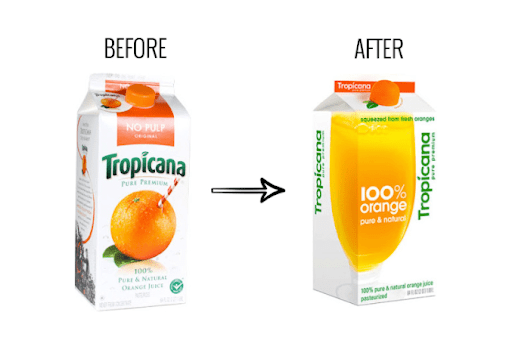
Source: The Branding Journal
Before, their carton features a big juicy orange and a bold, curved font. Instead, the new packaging features a glass of orange juice and a minimalist font.
Almost immediately, sales dropped by 20%, costing the company nearly $30 million and forcing them to return to their original packaging.
Imagine that you’re at the supermarket and you’re walking down the drink aisle — which juice carton would you choose?
Print Promotions
Although more and more consumers rely on the internet to find product information, print promotions are still a great way to communicate with your audience.
Because they’re tangible, people tend to hold on to print materials, whereas digital advertisements disappear once the viewer clicks to a different web page.
For example, this brochure helps pet owners stay up to date on their dog’s vaccinations. However, it also helps the veterinarian promote their practice by including their contact information on the cover.
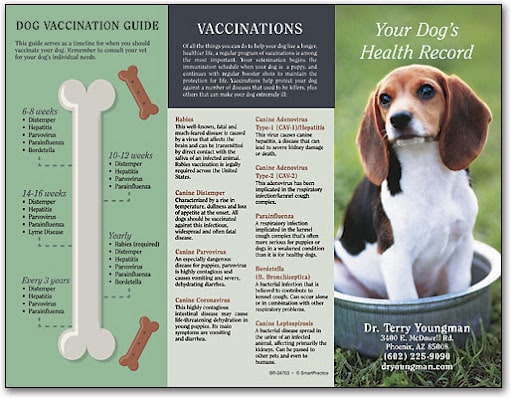
Source: SmartPractice
The pet owner can continue to reference this document to find out information about immunizations or discover the veterinary practice’s information.
Depending on your business, other materials may be more appropriate. For example, a retail company, like L.L. Bean, sends out seasonal catalogs to promote their new products.
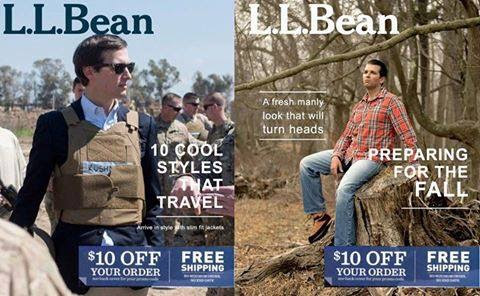
Source: Fred Harris
By sending a catalog each season, they remind their primary customers that there are new styles for them to buy, keeping them engaged.
Other types of print promotions can include:
- Flyers
- Posters
- Coupons
- Magazines
Graphic designers can help you create your print materials by designing easy-to-read layouts that clearly display their images and text.
Retail Displays
Retail displays are eye-catching ways to target your audience where they shop the most. They elevate your brand and make your products stand out on the shelves. As a result, they effectively increase sales by targeting impulse buyers.
Mars, the candy company behind some of your favorite sugary treats — Snickers, M&Ms, Orbit, and Skittles — uses retail displays every Halloween to market their candy.
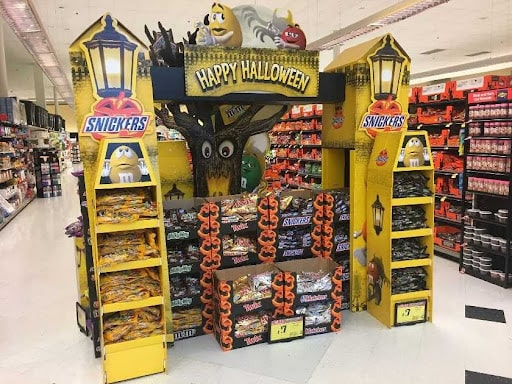
Source: Fit Small Business
In doing so, they tempt customers with a sweet tooth or remind buyers that they need candy for the upcoming holiday.
Graphic designers can improve your display and help it stand out. In this example, they added ghostly shadows, lamps, and a haunted tree so it represented the holidays theme. Around Christmas, they might change it up by adding pine trees and a red and green color scheme.
Website
Yes, your website is marketing collateral as well. How users interact with your business online influences how they view your business and their spending habits.
Consequently, creating a well-organized platform with an intuitive user interface (UI) is imperative.
While this is usually the web designer’s responsibility, they can work with graphic design companies to create visual elements such as illustrations and iconography that streamline the user experience.
They can also make sure that your visuals stand out on the page and your branding stays consistent across all of your materials.
Infographics
Infographics are illustrations, graphs, or charts that are used to provide information, especially data. Because people absorb visuals better than text, they’re a great way to get your point across.
Additionally, they’re linkable and easy to share, which boosts your SEO and helps your business grow brand awareness.
Consider this infographic on technology in education:
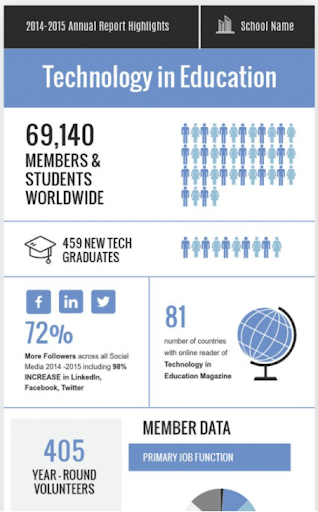
Source: Visme
The designer who created this infographic chose to highlight their data by enlarging their statistics. On top of that, they used visuals, like social media icons and stick figures, so viewers could easily visualize data and understand what it represents.
Other businesses are able to reference this data and link back to the infographic, which helps the original company become an industry expert.
Proposals & Presentations
Whether you’re creating a proposal for an upcoming project or presenting the results of your engagement, you want to make sure that your business tells your story well and looks professional.
Visuals play an important role in engaging in your audience. Rather than adding blocks of text to your powerpoint, use images as talking points and add graphs or charts when referencing specific data.
You should also include your brand elements, such as your color scheme, logo, and typography, to help your audience remember your business.
If you haven’t already, talk to your graphic designer about creating powerpoint templates that you can regularly use for big proposals and presentations.
Collateral Materials Promote Your Brand
Graphic designers can help you promote your business by developing appealing collateral materials that engage your audience and help them remember your brand.
Packaging, print promotions, retail displays, websites, infographics, or proposals, all represent your brand. You want these materials to stand out, engage customers, and encourage them to purchase your products or services.
By investing in these materials, you will elevate your brand.
Need help selecting a company?
Based on your budget, timeline, and specifications we can help you build a shortlist of companies that perfectly matches your project needs. Get started by submitting your project details.